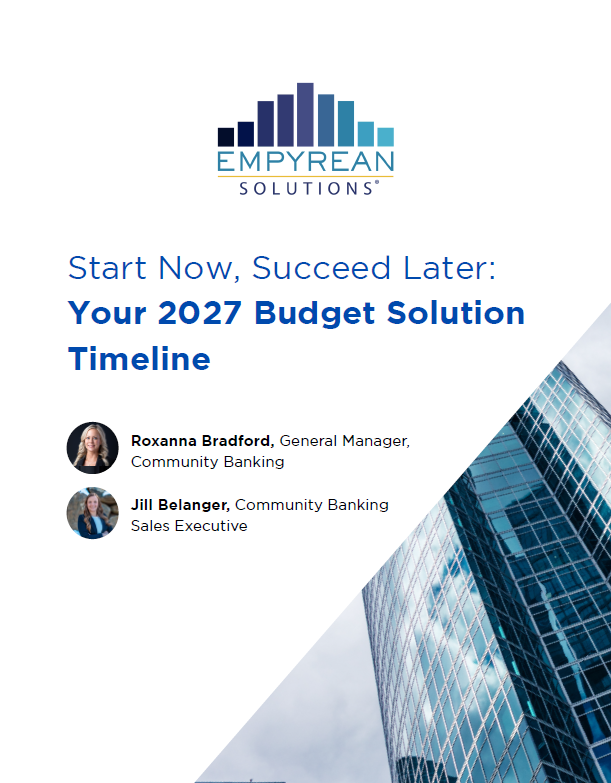Start Now, Succeed Later: Your 2027 Budget Solution Timeline

Are you struggling with cumbersome processes, manual procedures resulting in inefficiencies, outdated tools, or the inability to plan at the right levels?
With budgeting season approaching, many financial institutions find themselves questioning whether their current software—or Excel spreadsheets—can handle another year.
Download our guide, “Start Now, Succeed Later: Your 2027 Budget Solution Timeline” to get a headstart on your search for a better solution.
Are you ready to start evaluating budgeting tools? Check out our free Budgeting Evaluation Checklist to find out which solution is right for your organization.
Want to learn more?
Stay connected with Empyrean’s latest insights and solutions
Join our community of financial institutions and get access to live webinars, comprehensive guides, best practices, and industry insights that will transform your institution’s risk and planning management processes.
